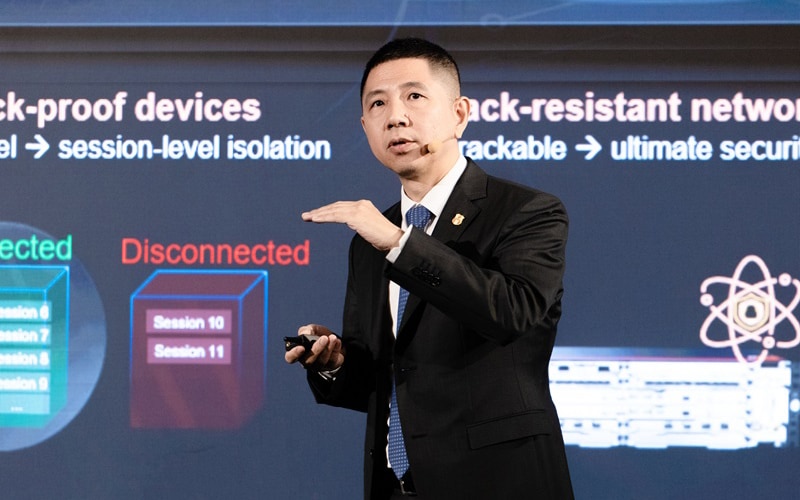Google Meet Unveils Real-Time AI-Powered Speech Translation | JK Tech
Google Meet Launches Real-Time AI Speech Translation
Google Meet, DeepMind, and Google Research have come together to build a real-time spoken translation feature that connects people worldwide. Here’s how the innovation came to life — and how artificial intelligence helped it move faster than anyone imagined.
Breaking Language Barriers
Like many Googlers, Fredric Lindstrom and Huib Kleinhout spend hours every week in virtual meetings across different time zones, regions, and languages. Fredric, based in Sweden, and Huib, based in Norway, have been working on Google Meet’s new Speech Translation feature — a tool designed to translate speech instantly, in a voice that sounds like your own.
The goal is simple: to ensure language never becomes a barrier to communication. Whether planning a holiday abroad, collaborating with a global team, or connecting with friends and family who speak a different language, Speech Translation makes real-time conversation possible.
From Vision to Reality
Fredric, who leads audio engineering for Google Meet, explains how far the technology has come. Two years ago, his team started working on speech translation. At that time, translation tools could handle offline processing, but instantaneous, real-time translation was still out of reach.
The challenge was huge — but possible. Working with Google DeepMind, the team aimed high. “When we started, we thought, ‘Maybe this will take five years,’” Fredric recalls. “But with AI, things just went faster and faster. Now, engineers from Pixel, Cloud, Chrome, and more are collaborating with DeepMind to make real-time translation a reality.”
A True Breakthrough
Earlier technologies relied on a three-step process:
- Transcribe the speech into text.
- Translate the text into the target language.
- Convert the translated text back into audio.
This chain causes delays of up to 10-20 seconds, making natural conversation impossible. Worse, the generated voice sounded generic, stripping away the speaker’s unique tone.
The breakthrough came with large “one-shot” models – systems, capable of producing audio translations directly. “You send audio in, and almost immediately the model starts generating translated audio,” Huib, who leads product management for audio quality, explains.
This innovation cut translation latency to just two to three seconds – the sweet spot for natural conversation. Any faster conversation will be difficult to understand; any slower conversation the flow felt unnatural.
Overcoming Challenges
Developing this feature wasn’t without hurdles. Ensuring high-quality translation in real-world scenarios was especially complex, with factors like accents, background noise, and network stability affecting performance.
To address this, Google partnered with linguists and language experts to refine translations and better capture linguistic nuances. Romance languages like Spanish, Italian, Portuguese and French were easier to implement due to structural similarities, while German presented tougher challenges with its unique grammar and idioms.
At present, most translations are still literal, sometimes leading to amusing or awkward results. But the team expects that with advanced large language models (LLMs), future updates will capture subtleties like tone, irony and cultural context more accurately.
Real Impact, Real People
For Frederic and Huib, seeing this technology move from research to real-world use has been deeply rewarding. Speech translation is now available in Italian, Portuguese, German and French with more languages to follow.
Fredric shares a moving example: “We’ve heard from people who immigrated to the U.S. with parents or grandparents who don’t speak English. They’ve never been able to have a real conversation with their grandchildren. Now, suddenly, they can. This technology bridges those kinds of gaps.”
The Future of Global Conversations
What began as a bold experiment is now reshaping how people connect across borders. By compressing years of expected progress into just two, Google has delivered a tool that creates a common language for everyone.
With AI advancing rapidly, Google Meet’s speech translation is only the beginning. The future promises even richer translations, more supported languages and conversations that sound as natural as if you were speaking face to face.
How JK Tech Helps Harness Google Meet Real-Time Speech Translation
JK Tech enables organizations in Singapore to deploy and optimize Google Meet’s AI-powered speech translation securely and efficiently. Our team ensures smooth, low-latency performance with proper setup, configuration, and integration into existing Google Workspace workflows, while aligning security and compliance with PDPA and global standards. We provide training, monitoring, and ongoing support so enterprises, schools, and agencies can collaborate seamlessly across languages, improving inclusivity, global teamwork, and customer engagement.
Contact JK Technology today !
Further Reading & Resources
https://blog.google/products/workspace/google-meet-langauge-translation-ai/– Google Newsroom
Published by JK Tech – Official Google Workspace Partner in Singapore
Source: Molly McHugh-Johnson, Google




